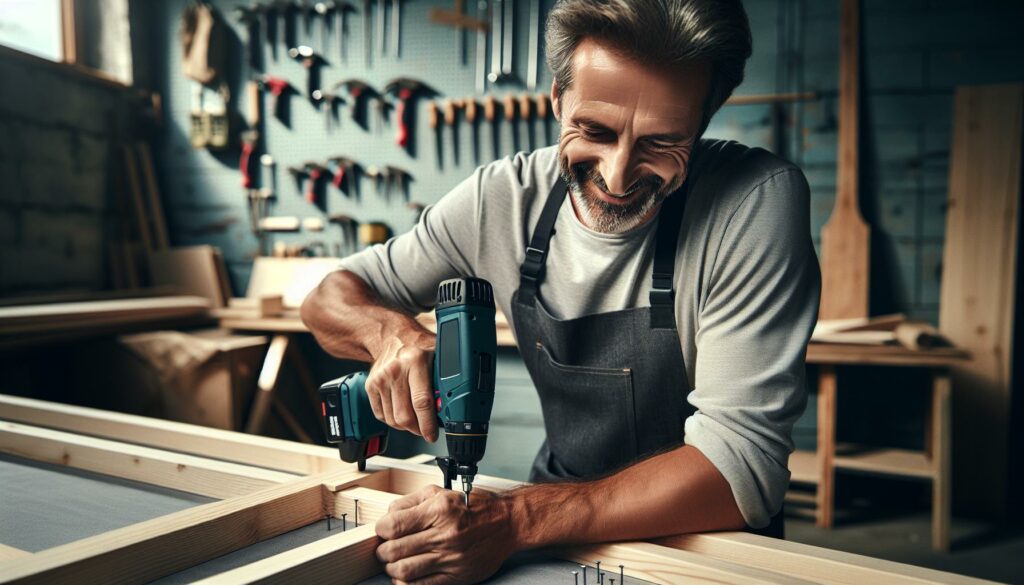There’s something incredibly satisfying about creating your own home decor and furniture from scratch. DIY wood projects not only add a personal touch to your space but also allow you to unleash your creativity. Whether you’re a seasoned woodworker or just starting out, there’s a project for everyone that can transform your home into a unique haven.
From rustic shelving units to charming garden planters, these projects can enhance both the beauty and functionality of your living space. I’ve discovered that working with wood is not just a skill; it’s a rewarding experience that brings a sense of accomplishment. Let’s dive into some inspiring DIY wood projects that will make your home feel more inviting and showcase your craftsmanship.
Key Takeaways
- Personalization and Creativity: Engaging in DIY wood projects allows individuals to add unique decorative elements to their homes, effectively showcasing personal style and creativity.
- Cost-Effective Solutions: DIY projects can significantly reduce expenses compared to purchasing pre-made furniture, as they eliminate labor costs and allow for material sourcing at lower prices.
- Skill Development: Working on woodworking projects enhances essential skills, including measuring, cutting, assembling, and equipment handling, while boosting confidence and problem-solving abilities.
- Essential Tools: To ensure successful project completion, having the right tools, such as circular saws, drills, and sanders, is crucial for accuracy and safety.
- Variety of Projects: Popular DIY wood projects include custom shelving units, coffee tables, and decorative items like personalized wooden signs, catering to various tastes and needs.
- Safety First: Prioritizing safety through the use of personal protective equipment and proper tool handling practices is vital for an enjoyable and incident-free woodworking experience.
DIY Wood Projects for Home
DIY wood projects enhance home aesthetics and functionality. These projects range from simple wooden signs to intricate furniture pieces. Each project allows for personal expression, making any space more inviting.
A variety of materials can suit different projects. Plywood, hardwood, and reclaimed wood provide unique textures and qualities. Choosing the right material contributes to the overall look and durability.
Tools play a crucial role in successful DIY wood projects. Essential tools include saws, drills, sanders, and clamps. Maintaining tool safety ensures a smooth and enjoyable crafting experience.
Design ideas can inspire creativity and innovation. Popular options include:
- Shelving Units: Functional and stylish, shelving units maximize storage and showcase items.
- Coffee Tables: Custom coffee tables can serve as focal points in living areas.
- Garden Planters: Planters bring greenery indoors and outdoors, enhancing the environment.
DIY wood projects not only boost home value but also create unique elements that reflect individual style. Exploring various projects allows for skill development and enjoyment in woodworking.
Benefits of DIY Wood Projects
Engaging in DIY wood projects offers numerous benefits that extend beyond mere aesthetics. From financial advantages to personal growth, these projects can significantly enhance one’s living space and craftsmanship.
Cost Savings
Implementing DIY wood projects can lead to substantial cost reductions compared to purchasing ready-made furniture and decor. Since I can source materials like plywood, hardwood, and reclaimed wood at lower prices and utilize leftover materials, the expenses decrease. Custom pieces often come with a higher price tag, but crafting my own eliminates labor costs and allows me to create exactly what I desire. By investing in tools and supplies only once, I can create multiple projects over time, maximizing my savings.
Skill Development
Pursuing DIY wood projects fosters significant skill development. Through hands-on experience, I learn essential woodworking techniques, such as measuring, cutting, assembling, and finishing. I also develop a better understanding of woodworking tools and safety practices. Over time, scalability becomes visible—I can take on more complex projects as my skills grow, resulting in increased confidence and craftsmanship. This process not only enhances my technical abilities but also encourages creative problem-solving, making each new project an opportunity for growth.
Essential Tools and Materials
Having the right tools and materials is crucial for successfully completing DIY wood projects. This section outlines the must-have tools and tips for choosing the right wood.
Must-Have Tools
- Circular Saw: Cuts wood sheets, enabling precise dimensions for projects.
- Miter Saw: Ideal for making angled cuts, perfect for frames and furniture.
- Drill: Essential for drilling holes and driving screws, ensuring sturdy connections.
- Sander: Smoothens surfaces and edges for a professional finish.
- Clamps: Holds pieces together securely during assembly and drying.
- Tape Measure: Ensures accurate measurements, reducing errors in cuts.
- Carpenter’s Square: Verifies right angles for structural integrity.
- Workbench: Provides a stable surface for cutting and assembling projects.
Choosing the Right Wood
Consider various wood types when selecting materials for projects. Common choices include:
- Plywood: Versatile and economical, best for furniture and decorative items.
- Hardwood: Durable and elegant, ideal for high-quality furniture and cabinetry.
- Softwood: Lightweight and easier to work with, good for beginner projects.
- Reclaimed Wood: Environmentally friendly and can add character to projects.
- MDF (Medium-Density Fiberboard): Smooth and inexpensive, suitable for painted projects.
Understanding the properties of each wood type helps in achieving desired aesthetics and functionality.
Popular DIY Wood Projects for Home
Creating DIY wood projects for home design allows for personalization and creativity. Here are some popular ideas that combine functionality with style.
Furniture Ideas
Building furniture pieces offers a rewarding challenge. I often start with these popular projects:
- Shelving Units: Custom shelves can fit any space and display favorite items or books.
- Coffee Tables: A handmade coffee table can serve as a focal point in the living room, with various styles from rustic to modern.
- Benches: Adding a bench to an entryway or garden provides both seating and storage options.
- Side Tables: Small side tables add convenience next to couches or beds, and can be uniquely styled.
- Dining Tables: Building a dining table brings families together and serves as a centerpiece for meals.
Decorative Items
Incorporating decorative items enhances the home’s atmosphere. I recommend these popular projects:
- Wooden Signs: Personalized signs can display family names or inspiring quotes, adding character to walls.
- Picture Frames: Custom frames showcase memories and add a personal touch to decor.
- Planters: Wooden planters, whether for indoors or gardens, provide a stylish home for plants and greenery.
- Wall Art: Constructing decorative wood art pieces can create unique focal points on walls.
- Candle Holders: Simple yet elegant candle holders can elevate the ambiance in any room.
These projects not only beautify a space but also express individuality through craftsmanship.
Tips for Successful DIY Wood Projects
Successful DIY wood projects require careful planning and attention to safety. Following these tips ensures a smooth crafting experience and enhances the final result.
Planning and Designing
Planning and designing serve as the foundation for any wood project. Sketch out your ideas to visualize the final piece and determine the necessary dimensions. Break down the project into smaller tasks, ensuring each portion is manageable. Choose durable materials that align with your design, taking into account the purpose and aesthetics of the item. Research similar projects for inspiration and techniques that can refine your approach.
Safety Precautions
Safety precautions play a crucial role in woodworking. Always wear personal protective equipment (PPE) such as safety goggles, ear protection, and dust masks to shield against debris and noise. Keep your workspace organized to prevent accidents and ensure easy access to tools. Familiarize yourself with each tool’s operation and safety features before use. Unplug power tools when changing blades or making adjustments. Additionally, maintain a first aid kit nearby in case of minor injuries, keeping potential hazards at bay enhances overall project success.


